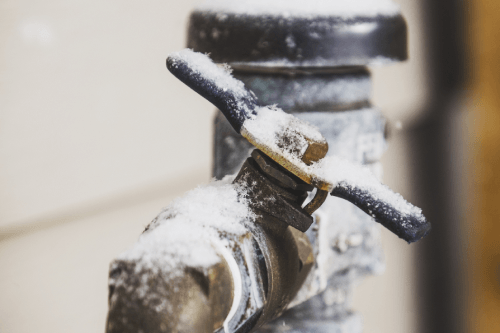Tips to Defend Your Pipes from Freezing: Professional Tips
Tips to Defend Your Pipes from Freezing: Professional Tips
Blog Article
Listed here below you'll find more good quality advice about Prevent Frozen Pipes .

Cold weather can ruin your plumbing, specifically by freezing pipes. Below's exactly how to avoid it from happening and what to do if it does.
Intro
As temperatures decrease, the threat of frozen pipelines increases, possibly leading to expensive repairs and water damage. Recognizing just how to prevent frozen pipelines is crucial for house owners in cool climates.
Prevention Tips
Protecting at risk pipelines
Wrap pipes in insulation sleeves or make use of heat tape to safeguard them from freezing temperatures. Focus on pipelines in unheated or outside locations of the home.
Home heating strategies
Maintain indoor rooms adequately heated, particularly locations with plumbing. Open cupboard doors to enable warm air to circulate around pipes under sinks.
Just how to recognize icy pipelines
Search for reduced water flow from taps, uncommon smells or noises from pipes, and noticeable frost on subjected pipes.
Long-Term Solutions
Structural changes
Take into consideration rerouting pipes away from outside walls or unheated locations. Include extra insulation to attic rooms, basements, and crawl spaces.
Upgrading insulation
Buy high-grade insulation for pipes, attics, and wall surfaces. Proper insulation aids preserve regular temperatures and lowers the danger of frozen pipes.
Shielding Outside Pipes
Garden hose pipes and exterior faucets
Disconnect and drain pipes garden tubes prior to wintertime. Mount frost-proof faucets or cover outside taps with protected caps.
Recognizing Icy Pipes
What causes pipelines to freeze?
Pipes freeze when revealed to temperatures listed below 32 ° F (0 ° C) for extended durations. As water inside the pipes ices up, it increases, taxing the pipeline walls and possibly creating them to burst.
Threats and problems
Icy pipelines can cause water supply disturbances, residential property damages, and costly repair work. Burst pipes can flood homes and trigger substantial architectural damages.
Signs of Frozen Pipeline
Determining icy pipes early can stop them from bursting.
What to Do If Your Pipelines Freeze
Immediate actions to take
If you believe icy pipelines, keep faucets available to relieve stress as the ice thaws. Use a hairdryer or towels soaked in warm water to thaw pipelines gradually.
Conclusion
Avoiding icy pipelines calls for aggressive measures and fast reactions. By recognizing the reasons, signs, and preventive measures, house owners can protect their pipes throughout cold weather.
5 Ways to Prevent Frozen Pipes
Drain Outdoor Faucets and Disconnect Hoses
First, close the shut-off valve that controls the flow of water in the pipe to your outdoor faucet. Then, head outside to disconnect and drain your hose and open the outdoor faucet to allow the water to completely drain out of the line. Turn off the faucet when done. Finally, head back to the shut-off valve and drain the remaining water inside the pipe into a bucket or container. Additionally, if you have a home irrigation system, you should consider hiring an expert to clear the system of water each year.
Insulate Pipes
One of the best and most cost-effective methods for preventing frozen water pipes is to wrap your pipes with insulation. This is especially important for areas in your home that aren’t exposed to heat, such as an attic. We suggest using foam sleeves, which can typically be found at your local hardware store.
Keep Heat Running at 65
Your pipes are located inside your walls, and the temperature there is much colder than the rest of the house. To prevent your pipes from freezing, The Insurance Information Institute suggests that you keep your home heated to at least 65 degrees, even when traveling. You may want to invest in smart devices that can keep an eye on the temperature in your home while you’re away.
Leave Water Dripping
Moving water — even a small trickle — can prevent ice from forming inside your pipes. When freezing temps are imminent, start a drip of water from all faucets that serve exposed pipes. Leaving a few faucets running will also help relieve pressure inside the pipes and help prevent a rupture if the water inside freezes.
Open Cupboard Doors
Warm your kitchen and bathroom pipes by opening cupboards and vanities. You should also leave your interior doors ajar to help warm air circulate evenly throughout your home.

Do you enjoy reading about Winter Plumbing Precautions: Preventing Frozen Pipes? Try to leave a review directly below. We would be delighted to find out your opinions about this article. Hoping that you visit us again in the future. Sharing is nice. One never knows, you might be doing someone a favor. Many thanks for being here. Revisit us soon.
Get An Estimate Report this page